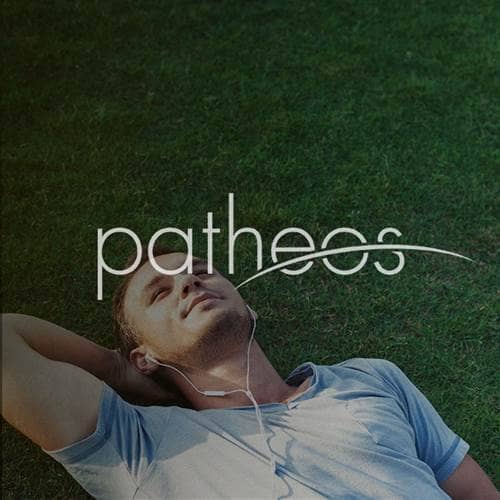- Trending:
- Pope Leo Xiv
- |
- Israel
- |
- Trump
- |
- Social Justice
- |
- Peace
- |
- Love

RELIGION LIBRARY
Taoism
Missions and Expansion
Kou Qianzhi, a powerful Celestial Master who claimed to have received two texts from the deified Laozi in 415 and 423, instituted changes in the Zhengyi movement to "purify" it from practices such as ceremonies involving sexual activity, elaborate banquets, and the collecting of taxes. He introduced rules of moral behavior, and stated that members who obeyed these rules would have eternal life, while (borrowing from Buddhist tradition) those who broke them would endure punishments in the afterlife or be reborn as insects or animals.
In the Tang dynasty, there another was a revival of Zhengyi. Like the Buddhists they sold ordination certificates; in the Taoist case these were registers that doubled as protective talismans. In the 9th century, Zhengyi leaders established local guilds and associations that regulated community life, including commercial and cultural exchange between local villages. Zhengyi also prospered during the Song dynasty, and had the official support of the Ming dynasty emperors.
When the first Taoist canon was created in the 5th century C.E., the Shangqing texts were ranked above all others. These texts were renowned for their literary merit, and in the Tang dynasty the movement benefited greatly from its appeal to the literati. Tang poetry and prose is full of allusions to Shangqing texts, and one of China's greatest poets, Li Bo (701-762), was a Shangqing initiate, as was the Tang emperor Xuanzong.
With a revival of interest in Taoism in the Tang came a revived interest in alchemy. Nobles and even emperors tried elixirs created by alchemists, and some died as a result. Shangqing encouraged the practice of an interior alchemy instead, in which these practices were visualized, and the entire Taoist cosmos was relocated into the individual human body. Soon internal alchemy became popular again, and other Taoist sects also encouraged interior practices. From the 6th to the 10th centuries, Shangqing was the most influential Taoist organization in China, and often benefited from imperial support.
In the 13th and 14th centuries, Zhengyi Taoism regained a place at the top of the hierarchy of Taoist religious organizations. Shangqing became more institutionalized over time, and the emphasis on meditation and visionary journeys by individuals gave way to enhanced clerical power. A new moral tone was established, rituals increasingly emphasized recitation of texts, and Shangqing grew more and more like Zhengyi.
Lingbao Taoism also went through several transformations during its history. Its ritual, at first derivative of the Way of the Celestial Masters, became more and more complex. As it did so, the participation of lay members declined, and the role of priests increased. The "Three Treasures" of Lingbao, modeled after the Buddhist formula, were the Tao, the Lingbao texts, and the Taoshi or Taoist masters. Once the ritual forms had been established, lay participation began to increase once more. During the 5th and 6th centuries, small groups participated, and soon thereafter whole extended families or villages were involved. Over time, many Taoist groups became community organizations, and priests became respected community leaders.
Taoism is also integral to Chinese popular culture, which has extracted elements from the tradition to create popular stories and visual arts. For example, literature written for a popular audience reflects a fascination with deities, immortals, and the world of the supernatural. In many novels, the hero or heroine is a deity who has been banished to or reborn in the human world. After a lifetime of practicing self-cultivation techniques, accumulating merit by saving others, and vanquishing demonic forces, the protagonist is able to return to heaven or immortality. It is not at all unusual to see Taoist deities or immortals as characters in movies, in paintings on restaurant walls, or represented by small statues providing protection and good fortune to homes and businesses.
There are some elements of Taoism in Japanese religious tradition, but they are scattered throughout popular culture and within esoteric religions such as Shugendo, rather than taking the form of organized Taoist religious groups.
The transmission of Taoism to Korea was more formal. On several occasions in the early 7th century, Tang emperors sent priests to teach Taoist ritual to Korean rulers. During the late Tang, monks from Korea traveled to China to study Taoism. During the Koryo dynasty (918-1392), Taoism became a part of official religious practice. Rituals were conducted by the rulers, Taoist centers were created, and Taoism was ranked equally with Buddhism. The following dynasty ended this relationship, and the last Taoist temple in Korea was destroyed in the Japanese invasion of Korea in the late 19th century. Elements of Taoism can still be found in the Korean "new religions" that developed in the 19th century and survived the Japanese invasion.
Most of the spread of Taoism has occurred within immigrant communities. After the Communist takeover in 1949, the Chinese Nationalist government and many Chinese people fled to Taiwan, and Taoism, particularly Zhengyi Taoism, continues to thrive there. There are active Taoist groups in Singapore and Malaysia, and, to a lesser extent, in Hong Kong. In any country where there are a significant number of Chinese immigrants, there will be Taoist priests and practices, often mixed together with Buddhism and popular religion.
Study Questions:
1. How did alchemy contribute to the spread of Taoism?
2. Why were Taoist rituals and texts instrumental to the rise of Taoism?
3. What can be said about the relationship between political oppression and the spread of Taoism?










